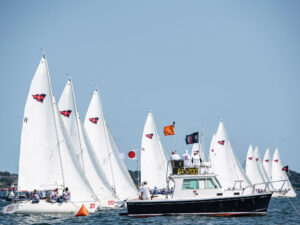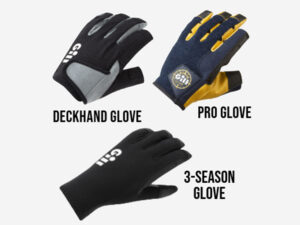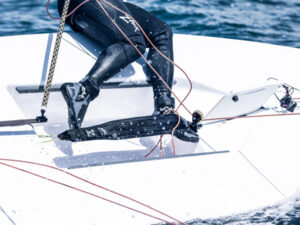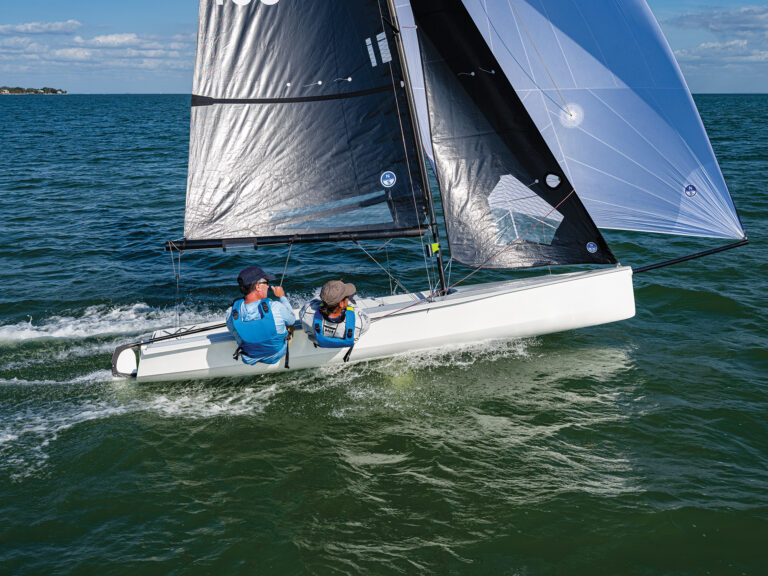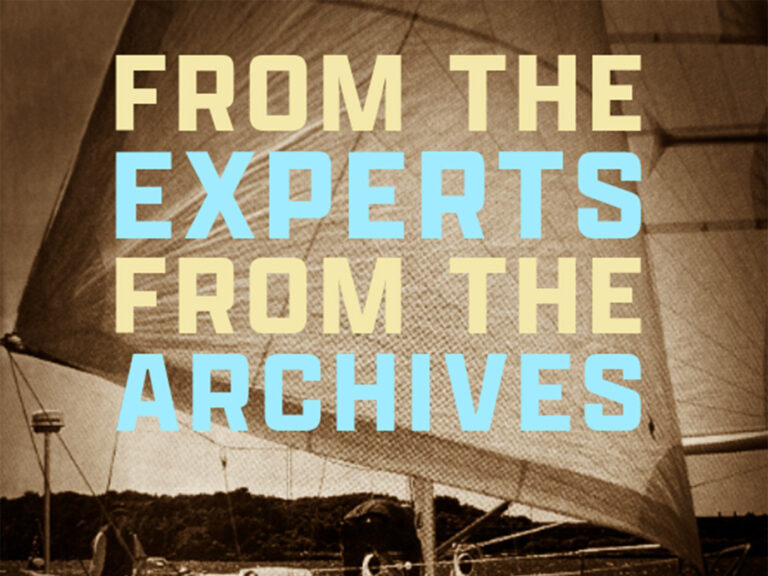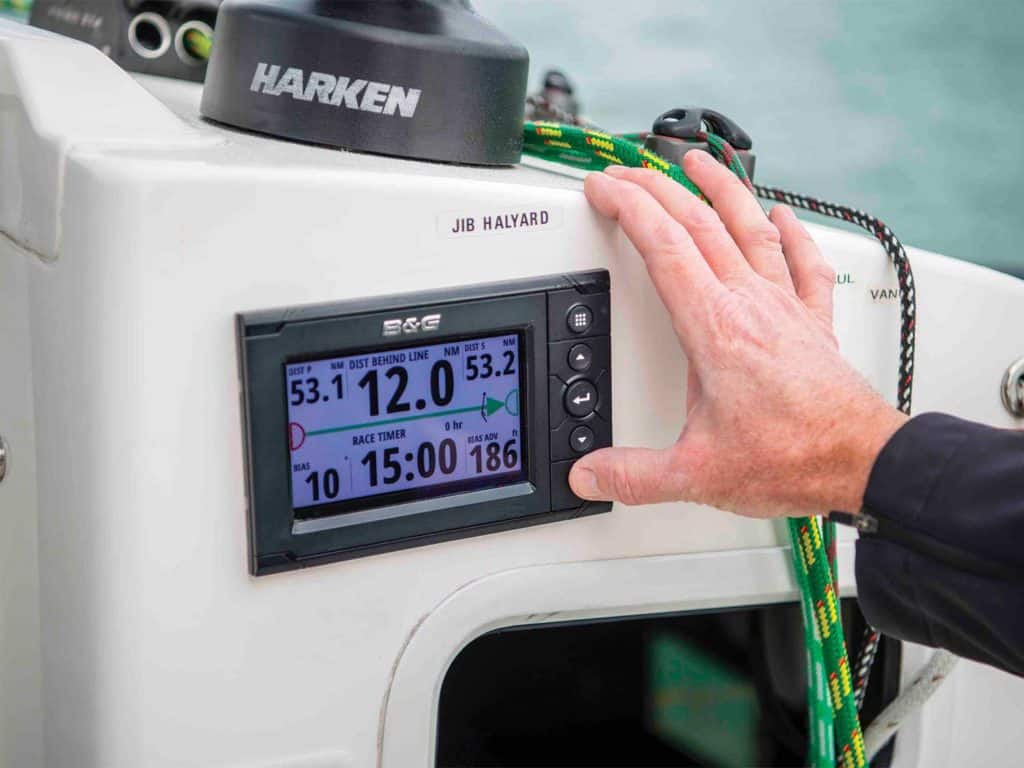
Having a modern autopilot—and knowing how to use it—can really expand what you can do with your boat. I have a 44-foot racer/cruiser named Dark Star. A few years ago, I did a solo sailing delivery from Desolation Sound in central British Columbia to Seattle, a distance of 200 miles. This would normally be a three-day trip, but with extensive use of my B&G pilot, I was able to make the passage in 24 hours by myself. This kind of trip is not for everyone, but it was a cool experience for me, made possible because I had a good autopilot and I know how to control it reasonably well.
I use the pilot a lot on Dark Star, both for cruising and shorthanded racing. When motoring, I employ the pilot most of the time, only hand-steering in crowded locations. Of course, it is critical to maintain a proper lookout at all times. The boat will go straight, but we’re still responsible for knowing what is in our path, be it land, logs, whales or other boats. I find not having to constantly steer makes the deliveries less tiring and more fun. Plus, it allows me to get some projects done while underway. I still keep a close watch for logs and kelp, two perennial hazards in Puget Sound, typically steering around the hazard using the +10 or -10 course-change keys.
For shorthanded racing, I use the pilot mostly when sailing singlehanded and during maneuvers when I’m racing doublehanded. For example, it is far easier to hoist the main with the pilot on, so you can use all your energy to pull up the sail. The pilot is also helpful for sail changes. Use the pilot to go straight (or maintain a constant wind angle) while you prepare for the maneuver, then use the pilot to assume the correct course during and after the maneuver. Let’s say I’m hoisting the spinnaker with two people aboard. Once I have the kite rigged and ready, I will set the pilot to steer 160 degrees true-wind angle. Then the two of us can pull out the tack at our leisure and hoist the sail carefully, with one person jumping at the mast and the second tailing. Once the new sail is up, one person can go the helm, heading up to the desired angle while the second crew trims the sheet.
The pilot works best in steady conditions, although modern pilots are capable of dealing with shifty wind as well. If I am cruising or racing with a small crew, I will switch on the pilot every time I want to make an adjustment to the sails, check the chart, eat a snack, etc. Normally, I use my remote to control the pilot, which I have on a lanyard around my neck. I can control the boat’s course no matter where I am on the boat while also remembering to keep a good lookout, exercise good seamanship, and not get lazy.
I also use the pilot extensively when racing at night or when I am tired. I find I can still keep a good watch while using less energy than if I was hand-steering. Sometimes I will set an alarm just in case I nod off.
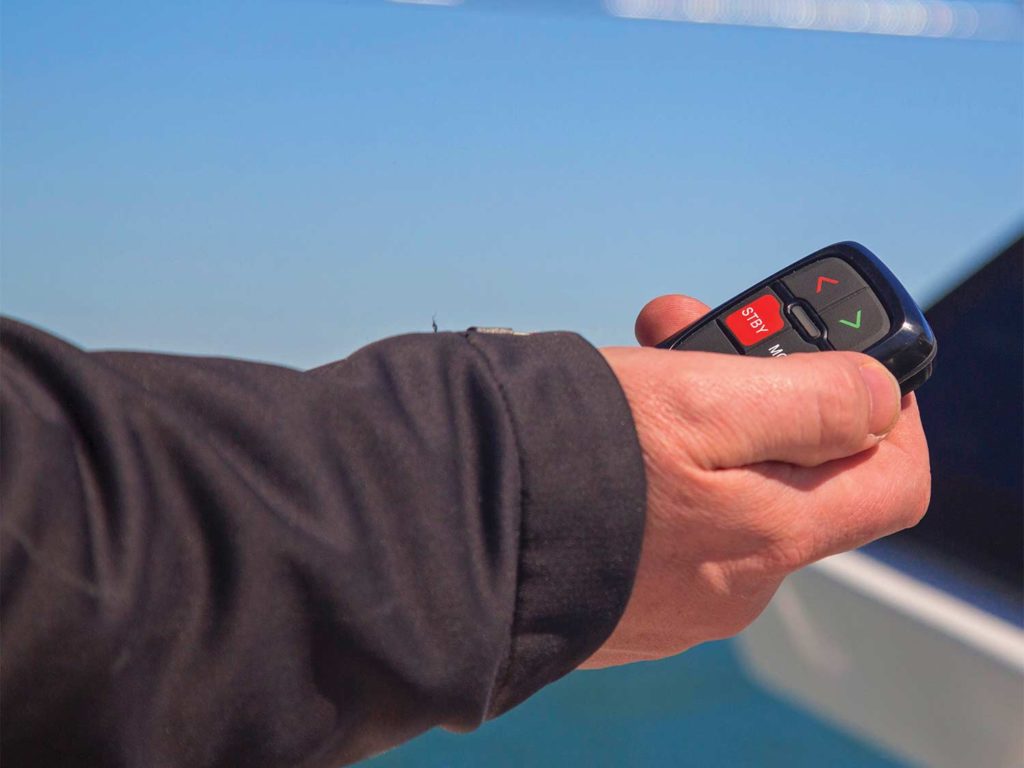
I recently upgraded my autopilot system on Dark Star to a B&G H5000, and man, what a difference. The pilot is now much more accurate and responsive, and capable of steering well in a lot more conditions, including under spinnaker and in shifting winds. Lately, I have been racing my boat exclusively doublehanded, so having a modern pilot is a huge benefit, and it makes racing more fun and less work. It would be really hard to race my boat well doublehanded without it. I have used my new system for about a year, so I am no expert with it, but there are a few settings and controls that I currently use. (Remember, these settings are for the B&G H5000, but other brands will offer similar functionality.)
Pilot Mode: Push “Auto” on the controller or remote to engage (pilot steering to course), then push “Mode” to toggle between compass, true-wind angle and apparent-wind angle (pilot steering to wind angle). Push “Standby” to disengage.
Change Course in Compass Mode: From the controller or remote, push +1 for a 1-degree right turn, push +10 for a 10-degree right turn, push -1 for a 1-degree left turn, and push -10 for a 10-degree left turn.
Change Course in AWA or TWA Mode: From the controller or remote, push +1 for a 1-degree bear away, push +10 for a 10-degree bear away, push -1 for a 1-degree head up, and push -10 for a 10-degree head up. For 95 percent of situations, that is all I need, but using the pilot to help with tacking and jibing is incredibly helpful, and there are several modes to use.
Tacking in Compass Mode: First prepare the boat to tack. When ready, push +1 and +10 together to turn right, or -1 and -10 together to turn left. The boat will start to tack. The change of course is set in Setup>Sailing>Tack Angle>80 degrees. The rate of turn can be controlled in the “Tack Time” parameter: Setup>Sailing>Tack Time>8 sec.
Tacking in Wind Mode (Either TWA or AWA): Prepare the boat and sails to tack. When everything is ready, push +1d and -1d together for a couple of seconds. When you see the confirmation box, push +1d to confirm. The boat will start to tack. The new final course will mirror the wind angle before the tack.
Jibing: The procedure is the same as tacking. If the TWA is greater than 70 degrees, the boat will jibe instead of tack.
Another important control is the Pilot Response. This is my most often-used control. It manages the overall response of the pilot steering. There are five settings between Perf 1 (low response, low power use) and Perf 5 (high response, high power use). The keystrokes from any display are as follows: Main Menu>Response>Perf 3. You want to start with a lower setting, then increase it if the boat can’t keep course, either because of sea state or variable wind. So, use Perf 1 for flat water and steady wind, but Perf 4 for shifty wind or big waves.
Another control that is adjusted less often is Auto Response. This controls the rate the pilot reacts to any environmental influences on the boat’s desired course. For this, go to Menu>Steering>Auto Response>Economy, Normal or Sport. Recovery Function allows the user to set the sensitivity to course errors, and how the pilot reacts to unexpected events. If this is enabled, the pilot will switch to Perf 5 for a short period to correct course. The path here is: Menu>Steering>Recovery>Narrow (most responsive), Medium or Wide.
Heel Compensation applies a preemptive rudder correction in response to heel. The path here is: Sailing>Heel Compensation>Enable, then Sailing>Heel Compensation>1 through 10.
Rudder Gain controls the amount of rudder used for a given course error, especially at low response levels. The path here is: Installation>Commissioning>Sea Trial>Rudder Gain>3.
Cruising Speed sets the baseline speed, usually close to the hull speed of your boat. The path here is: Steering>Limits>Cruising Speed>7 knots.
Auto Trim corrects for persistent course errors by looking at the rudder offset. To set this up, follow: Installation>Commissioning>Sea Trial> Auto Trim>60 seconds.
Adapt is a cool steering algorithm that continues to learn variables that are essential for steering performance. To get to this function: Installation>Commissioning>Sea Trial>Adapt>Enable.
If Wind Mode is enabled, the pilot will automatically switch from apparent-wind angle upwind to true-wind angle downwind (at 70 degrees TWA). I like to enable this because I prefer AWA upwind and TWA downwind. To set this: Sailing>Wind Mode>Auto.
One other tip I’ll share is to wait to engage the pilot until the boat is stable and going straight. Then push the Auto button on either the remote or the controller. Wait a few seconds to make sure the pilot is engaged and doing well before you walk away. I often start out in Compass Mode, then shift to Wind Mode when I am happy with the course. I always carry the remote with me as I move around the boat so I can make course adjustments at any time.
I am most familiar with the B&G system, but whatever system you use, make sure your calibrations and setup are done carefully and correctly. Then take the time to really learn how your pilot works, get comfortable with the main controls, and practice using it until it is familiar. For me, effective use of a modern autopilot has made sailing and delivering more fun and allowed me to use my boat in different ways, especially over long distances and shorthanded. By the way, the Vendée Globe first-to-finish skipper Charlie Dalin used the pilot on his foiling IMOCA 60 for every minute of his 80-day trip around the planet, never once hand-steering the boat. I don’t suggest this for the rank-and-file shorthanded sailor, but it sure shows the potential of this great tool.


